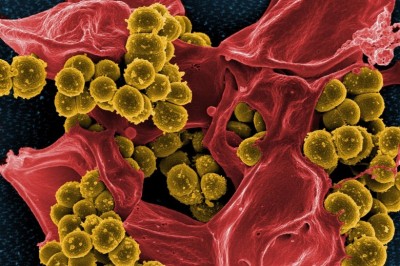Toxic Shock Syndrome - Definition, Causes, Symptoms and Treatment
Streptococcal toxic-shock syndrome is defined group A streptococcal infection. It is associated with the early onset of shock and organ failure. It can be caused by one of two different types of bacteria, Staphylococcus aureus and Streptococcus pyogenes. This bactria affects the whole body. Staphylococcus can produce toxins. In some people whose bodies cant fight these toxins, the immune system reacts. Most often STSS appears after streptococcus bacteria have invaded areas of injured skin, such as cuts and scrapes, surgical wounds, and even chickenpox blisters. It almost never follows a simple streptococcus throat infection (strep throat). The symptoms of TSS include sudden high fever, a faint feeling, watery diarrhea, headache, and muscle aches. If your child has these symptoms, its important to call your childs doctor right away.
S. aureus commonly colonizes skin and mucous membranes in humans. TSS has been associated with use of tampons contraceptive devices in women. In the United States, annual incidence is 1-2/100,000 women 15-44 years of age.Other risk factors for toxic shock syndrome include skin wounds and surgery. Signs and symptoms of toxic shock syndrome develop suddenly, and the disease can be fatal. Almost every organ system can be involved, including the cardiovascular, renal, skin, mucosa, GI, musculoskeletal, hepatic, hematologic, and central nervous systems. Toxins produced by the staph or strep bacteria and accompanying hypotension may result in kidney failure. If your kidneys fail, you may need dialysis. Always use a tampon with the lowest absorbancy suitable for your period flow and use a sanitary towel or panty liner from time to time during your period.
Causes of Toxic Shock Syndrome
1.Use of superabsorbent tampons.
2.Postpartum toxic shock.
3.Nasal packing.
4.Common bacterial infections.
5.Viral infection with influenza A or varicella.
6.Diabetes mellitus.
Symptoms of Toxic Shock Syndrome
1.Vomiting.
2.Sunburn-like rash.
3.Diarrhoea.
4.Fever.
5.Muscle aches.
6.Dizziness.
7.Confusion.
Treatment of Toxic Shock Syndrome
1.Toxin production: Drain or debride the lesion, remove foreign material, and irrigate copiously. Recent surgical wounds should be explored and irrigated even when signs of inflammation are absent.
2. Aggressive fluid resuscitation: Loss of fluid into the extravascular compartment can be very substantial. Maintenance of cardiac filling pressures is critical in order to prevent end organ damage. Adult patients with TSS have required up to 10 L of fluid in the first 24 hr.
3. Administration of antistaphylococcal antibiotics: Semisynthetic penicillins have been widely used for TSS. Recommends treating suspected TSS patients with clindamycin (900 mg i.v. every 8 hours for adults; 13 mg/kg i.v. every 8 hours for children), either alone or in combination with a cell wall active agent (semisynthetic penicillin or vancomycin). If the diagnosis of TSS is initially uncertain, broader empiric coverage is appropriate.
4.General supportive care: Intensive care monitoring is often indicated. Replete calcium and magnesium; provide ventilatory, pressor, and inotropic support; manage rhabdomyolysis, renal dysfunction, and / or coagulopathy.
5.Administration of pooled human immunoglobin: This should be reserved for refractory cases or cases associated with an undrainable focus of infection. All commercial immunoglobulin preparations contain high levels of anti-TSST-1 antibody. A single infusion of 400 mg/kg i.v. will generate a protective titre in a nonimmune patient
6.Toxins produced by the staph or strep bacteria and accompanying hypotension may result in kidney failure. If your kidneys fail, you may need dialysis.
Juliet Cohen writes articles for http://www.health-disease.org/ and http://www.women-health-guide.com/






















